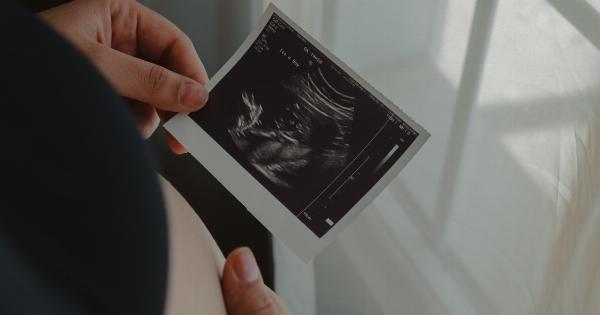Pregnancy is a time of excitement, but it can also be a time of concern for expecting mothers. While most pregnancies result in healthy babies, there are potential threats that can arise during pregnancy.
These threats can negatively affect the development of the fetus and can even lead to complications during childbirth. It’s important for women to understand these potential risks to their growing baby and take steps to prevent or manage them. Let’s take a look at some of the major potential threats to the fetus during pregnancy.
1. Maternal Infections
Maternal infections can be very harmful to a developing fetus. Some infections that can be transmitted from mother to child include cytomegalovirus, rubella, syphilis, toxoplasmosis, and Zika virus.
These infections can cause birth defects, developmental delays, and even miscarriage or stillbirth. Expecting mothers should take steps to prevent infection, such as practicing good hygiene and avoiding contact with individuals who are sick or have been exposed to infection.
Treatment may also be available if an expecting mother becomes infected with a harmful pathogen.
2. Gestational Diabetes
Gestational diabetes occurs when a woman develops high blood sugar levels during pregnancy. This condition can lead to complications such as preterm birth, larger than average birth weight, and respiratory distress in the newborn.
Blood sugars levels can be managed with proper nutrition, exercise and in some cases medication. Pregnant women should be screened for gestational diabetes between 24-28 weeks gestation.
3. Maternal Hypertension
High blood pressure, or hypertension, is a common condition that can become dangerous during pregnancy. If left untreated, hypertension can lead to preeclampsia, a serious medical condition that can harm both the mother and baby.
Preeclampsia is characterized by high blood pressure, protein loss in urine, and symptoms such as severe headache and abdominal pain. Treatment for maternal hypertension depends on the severity of the condition, but can include close monitoring and medication.
4. Placental Problems
The placenta is an essential part of a healthy pregnancy, providing nutrients and oxygen to the growing fetus. However, problems with the placenta can arise, including placenta previa, placental abruption, and placenta accrete.
Placenta previa occurs when the placenta partially or completely covers the cervix, while placental abruption is when the placenta separates from the uterine wall before delivery. Placenta accrete occurs when the placenta grows into the uterine wall. These conditions can cause bleeding, preterm labor, and even fetal death.
Treatment for placental problems may involve bed rest, medication, or surgical intervention, depending on the severity.
5. Environmental Toxins
Exposure to environmental toxins can cause harm to a developing fetus. Commonly known environmental toxins include cigarettes, drugs, and alcohol. These toxins can cause birth defects, developmental disorders, and low birth weight.
It’s important for pregnant women to avoid tobacco, drugs, and alcohol for the well-being of their baby. Other environmental toxins can include lead or mercury, which can be found in certain foods or products. Expecting mothers should take steps to avoid exposure and speak to their healthcare provider about any potential risks.
6. Genetic Abnormalities
Genetic abnormalities can be inherited or can occur spontaneously during fetal development. Some genetic abnormalities include Down syndrome, cystic fibrosis, and sickle cell anemia.
Detection of some genetic abnormalities can be done with prenatal testing. These prenatal testings can help expecting parents prepare for the care a child with a genetic abnormality may need.
Speaking to a health care provider about prenatal testing and newborn screening can be an important part of understanding your future child’s health.
7. Maternal Obesity
Maternal obesity can cause many health problems in both the mother and unborn child. Babies born to mothers who are obese are more likely to be born preterm and experience birth trauma.
These babies are also more likely to develop childhood obesity, metabolic disorders, and heart disease. Weight management, through a healthy diet and exercise, before and during pregnancy can help prevent poor outcomes.
8. Stress
Stress during pregnancy can have negative effects on a developing child. High levels of stress can contribute to preterm birth and low birth weight babies.
Stress management techniques such as exercise, relaxation, and social support can help expecting mothers manage stress levels. It is important to speak with a healthcare professional if stress becomes unmanageable.
9. Sudden Infant Death Syndrome (SIDS)
Sudden infant death syndrome (SIDS) is a tragic and unpredictable occurrence. While not much is known about the causes of SIDS, infants who sleep on their stomachs or do not use a safe sleeping environment, such as a crib, are at higher risk.
Planning for a child’s sleeping arrangements prior to delivery, such as creating a safe sleeping environment using a crib, and following SIDS prevention tips can reduce the risk of SIDS.
10. Multiple Pregnancies
Multiple pregnancies, such as twins or triplets, can be a result of fertility treatment or natural conception. Multiple pregnancies can increase the risk of premature birth and low birth weight.
Multiple pregnancies can also lead to a condition called twin-to-twin transfusion syndrome, where one twin receives more blood flow than the other, leading to developmental problems and even death of one or both twins. Close monitoring by health care providers of mothers carrying multiples is essential.






























